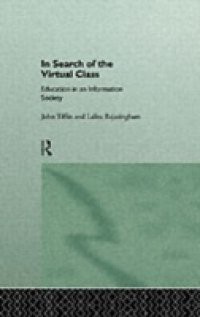'Shirley zips into her skin-tight school uniform, which on the outside looks something like a ski suit. The lining of the suit in fact contains cabling that makes the suit a communication system and there are pressure pads where the suit touches skin that give a sense of touch. Next, she sits astride something that is a bit like a motorbike, except that it has no wheels and is attached firmly to the floor. Her feet fit on to something similar to a brake and accelerator and her gloved hands hold onto handlebars. She shouts, "I'm off to school, Dad". Her father, who is taking time out from his teleworking, begins to remind her that the family are going teleshopping in the virtual city later in the day, but it is too late, his daughter has already donned her school helmet. She is no longer in the real world of her real home, she is in the virtual world of her virtual school.'Is this the shape of the future of education? This book presents a vision of what will happen to education and training as information technology develops. The argument is simple. To prepare people for life in an information society they need to be taught with the technology of an information society. But what shape will that take? Can the classroom as we know it - a communications system which has been in place for four thousand years - be replaced? The authors argue that through the development of telecommunications for telelearning a genuine revolution in education is in the making. The book describes how, through the convergence of a cluster of new technologies including virtual reality, artificial intelligence, nanotechnology and the superhighways of telecommunications, a new educational paradigm will emerge in the form of a virtual class. Teachers, trainers and educators who worry about how best to prepare students for life in an ever-changing world will find much inspiration in this engagingly written and jargon-free book

